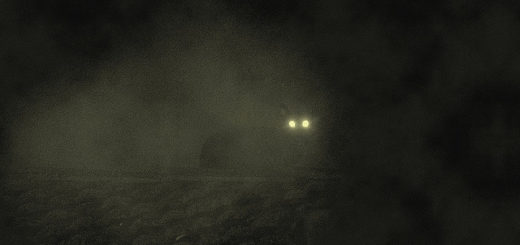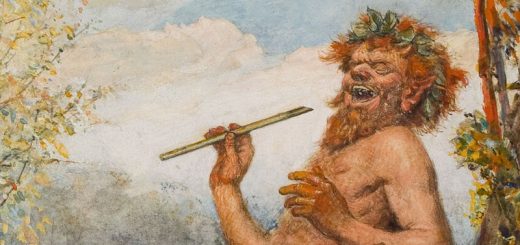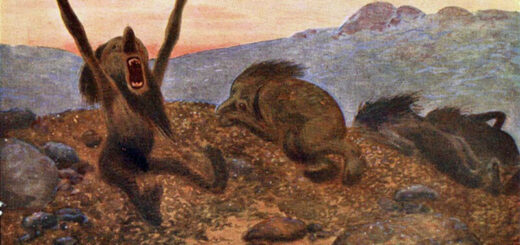Japanese Witchcraft or Kodoku
Japanese witchcraft or Kodoku is an unknown phenomenon in the West. In Japan, magic doesn’t necessarily have a negative connotation; rather, it is often viewed positively. However, it was stigmatized as superstition and even prohibited in the 19th century, surviving in secrecy within religion. The most common name for Japanese esoteric culture is “onmyōdō,” although in Japan, magic, closely related to all esoteric and religious aspects of Chinese culture, could be grouped under the name “jujutsu.”

The various purposes of magic could be separated and identified into five categories: divination magic, techniques of fortune-telling, superstitions and taboos, black or malevolent magic, and elemental magic. In this instance, we will focus on a specific case of magic, which can be termed witchcraft within the Western concept of malevolent intent: “kodoku.”
Kodoku (蠱毒, ‘curse poison’), also called kodō (蠱道, ‘curse method’), kojutsu (蠱術, ‘curse technique’), and fuko (巫蠱, ‘sorcery curse’) is a type of poisonous magic found in Japanese folklore.
The technique was first used in the Nara period.The Nara period (Nara jidai) of the history of Japan covers the years from CE 710 to 794. Empress Genmei established the capital of Heijō-kyō (present-day Nara). Except for a five-year period (740–745), when the capital was briefly moved again, it remained the capital of Japanese civilization until Emperor Kanmu established a new capital, Nagaoka-kyō, in 784, before moving to Heian-kyō, modern Kyoto, a decade later in 794.
Japanese witchcraft or Kodoku has its counterpart in Chinese magic called “Gu” or “Jincan,” which focuses on the development of poisons, later associated with spiritual or willful poisoning and possession, meaning control over the bewitched through these means.
As for the practitioners of this malevolent magic, it’s difficult to specify whether they were predominantly men or women, although negative female examples are abundant, perhaps because in China, too, it was a common belief that the afflicted were primarily men who had gone to war. However, this contrasts with the idea of high fees and knowledge of reading and writing.
The term “kodoku,” also known as “kodō,” “kojutsu,” or “fuko,” is explained by its own etymology, linked to toxicity and insects such as worms, snakes, spiders, toads, or scorpions. This technique was popular from the 7th century, during the Tang Dynasty in China and the Nara and Heian periods in Japan, until it was banned and condemned around the 14th century.
Even today, in certain regions of southern China and in Japan, in areas like Shikoku, family trees are examined, following superstition, to prevent prospective brides or grooms from having any relatives who practiced this type of black magic.
Primary ritual of kodoku
The primary ritual of kodoku, as well as its Chinese counterparts, involved enclosing a group of poisonous insects or other animals like snakes, scorpions, spiders, etc., in a jar or box without feeding them, so they would kill and devour each other. The last one remaining would absorb all the energy and hatred of the rest, becoming very powerful, and its toxicity would also increase.
Various fates awaited the survivor: among the most popular was to bewitch it and feed it to enhance its poisonous power, which could be directed against the enemy targeted for the curse. Sometimes, it was believed that the survivor’s nourishment came from the conjured individual’s energy.
Neglecting to feed it had dire consequences for the sorcerer, as the survivor’s energy would turn against them until they compensated by granting favors, sometimes even financially or through liberation.
Interestingly, one way to break such a curse was to identify the culprit and release the animal or leave it inside the jar along with a pile of money, gold, or jewels by the roadside.
It is understood that this money served as bait for anyone who found and took it, also taking the curse with them. Seeking the help of a priest, exorcist, medium, or an onmyōji to identify and purify the curse was also a means of liberation. The death of the animal, of course, was an instant remedy.
A second option was to kill the surviving animal and use its body or fluids as part of poisons or potions, intended for physical, mental, and spiritual harm to the targeted enemy.
Parasitic ointments could be created to cause plagues in crops and deadly diseases to humans and livestock. However, they could also be used to create love potions, gain favor from someone, accumulate wealth or power, and protect the sorcerer from harm, among other purposes. It should be noted that sudden illness has always been considered a clear sign of being bewitched in most cultures.
In cases of physical illness, medicinal remedies were used, including homeopathic ones, seeking predators of those creatures used to create the poison to formulate an antidote.
Cursed victim targeted by animal spirit
The third option was to kill the animal and transform it into a magical object, fetish, or amulet, which could be carried or hidden for rituals. The spirit of the animal, filled with hatred, poison, and power, could manifest in the form it had in life or even directly possess the individual targeted by the curse, compelling them to fulfill their master’s commands or engage in non-human, animal-like actions, which could raise suspicions of possession.
In terms of object infestations, it aligns with “tsukimono,” spirits that possessed individuals and occasionally objects, such as the “jatai,” the obi or kimono belt, which was said to be used by jealous witches to strangle their ex-lovers or enemies while they slept.
This article is based on the article “Kodoku, brujería japonesa” of Academia Bibliothecaque Religionum et Arcanorum, see abracademica.com
See also: Pulsa diNura – the secret death curse of the kabbalists






